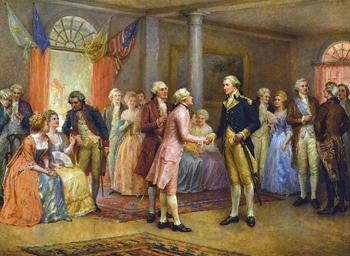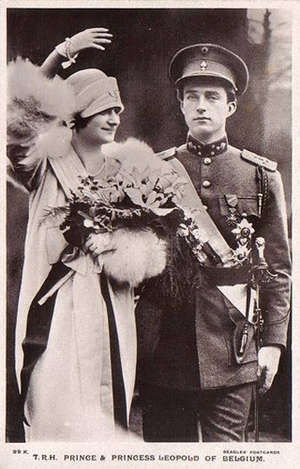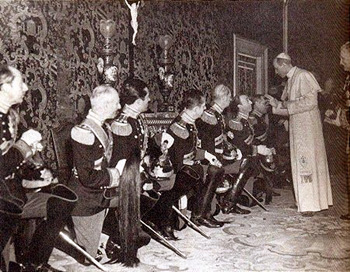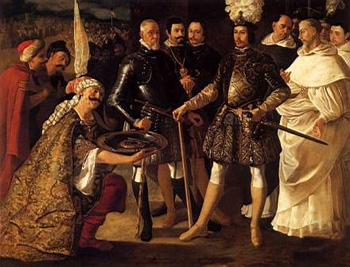Excellence of the Catholic Gentleman & Lady
Two essential principles defined the physiognomy of the noble:1. In order to be the exemplary man standing as the head of the fief, like the light topping a chandelier, the noble had to be, by definition, a Catholic hero disposed to endure any sacrifice for the good of his King and his people. He had to be the armed defender of the Faith and Christendom in the frequent wars against pagans and heretics.
2. In every aspect of life, he and his family had to give a good example – an excellent example – to their subordinates and peers. In virtue as well as culture, manners, taste, the décor of the home and celebrations, their example had to motivate the whole social body so that everyone would naturally rise in every field.
The Catholic gentleman & lady
These two principles had an admirable practical scope, as we shall see. During the Middle Ages, they were authentically lived with conviction and religious sentiment. In this way, the physiognomy of the Catholic gentleman and lady was formed in European culture and, later, in the whole West.

George Washington receiving the Marquis of Lafayette
When the nobility lost almost everything we mentioned, not only in Italy … but in other countries as well, the elevated human standard of the gentleman and lady remained. This standard, the supreme and last treasure of the nobility, cannot be fully understood without taking into account why and how it was formed through the creative process of feudalism and the feudal hierarchy.
Sacrifice, good manners, etiquette and protocol suffered simplifications and mutilations imposed by the bourgeois world
Sacrifice. The word deserves to be emphasized because it had a central importance in the life of the noble. It was present even in his social life in the form of an asceticism that deeply marked it. Indeed, good manners, etiquette and protocol developed according to standards that demanded from the noble a continual repression of what is vulgar, rough and even offensive in so many of man's impulses. Social life was, in some aspects, a perpetual sacrifice that became more demanding as civilization progressed and refined itself.

Future King Leopold of Belgium
with Queen Astrid
Without exception, all these changes were introduced to offer ease, insouciance and bourgeois comfort to the nouveaux fiches bent on conserving as much as possible of the vulgarity of their previous lifestyle in the midst of their recently-acquired opulence.
Thus, the erosion of good taste, etiquette and good manners resulted from a spirit of laissez-faire, a desire to "unwind" and be comfortable, and the prevalence of the spontaneous and extravagant whims of "hippyism," which reached an apex in the unbridled rebellion of the Sorbonne in 1968 and in subsequent youth movements such as "punkism".
Harmonious diversity in the practice of virtues through self-denial in the religious state and grandeur & splendor in temporal society
At this point, we should mention a characteristic of soul that stands out in many members of nobility.
Many Saints of noble birth renounced their social condition to practice the perfection of virtue in the earthly self-denial of the religious state. How splendid were the examples they gave to Christendom and the world!

The Papal Noble Guard kneeling before Pius XII
They did this to the advantage not only of the salvation of souls, but for the good of temporal society itself. In this sense, nothing is more beneficial to the State and society than having in its highest ranks persons who shine with the sublime respectability that emanates from the Saints of the Catholic Church.
Indeed, there are innumerable beatified and canonized nobles who, without renouncing the earthly honors of their rank, stood out for their particular love for the needy. They earnestly practiced a preferential option for the poor.
Many nobles who chose the admirable self-denial of religious life also shone in solicitous service to the needy. They became poor with the poor to lighten the earthly crosses of the destitute and prepare their souls for Heaven.
It would unduly prolong this work to mention the numerous nobles of both sexes who, for love of God and neighbor, practiced the evangelical virtues amid the grandeur and splendor of temporal society, as well as those who practiced them in the self-denial of religious life.
How to govern – and how not to govern

Surrender of Seville to St. Ferdinand
As we said in the beginning of this chapter, to govern men it is first necessary to gain their admiration, confidence and affection. This requires a profound consonance of principles, aspirations and rejections, and a body of culture and traditions common to those governing and those governed. Feudal lords generally achieved this objective in their fiefs by continually stimulating the people toward excellence in every field.
Even when trying to obtain a popular consensus in favor of wars resulting from the conditions of the time, the nobility used suasive means. In doing so, it was expected to give priority to the ecclesiastical hierarchy's preachings on the moral circumstances that might justify a war, whether for religious or temporal reasons.
Excerpt from Nobility and the Analogous Traditional Elites by Plinio Corrêa de Oliveira Plinio Corrêa de Oliveira, Chap VII, "Genesis of the Nobility," pp. 110-112
